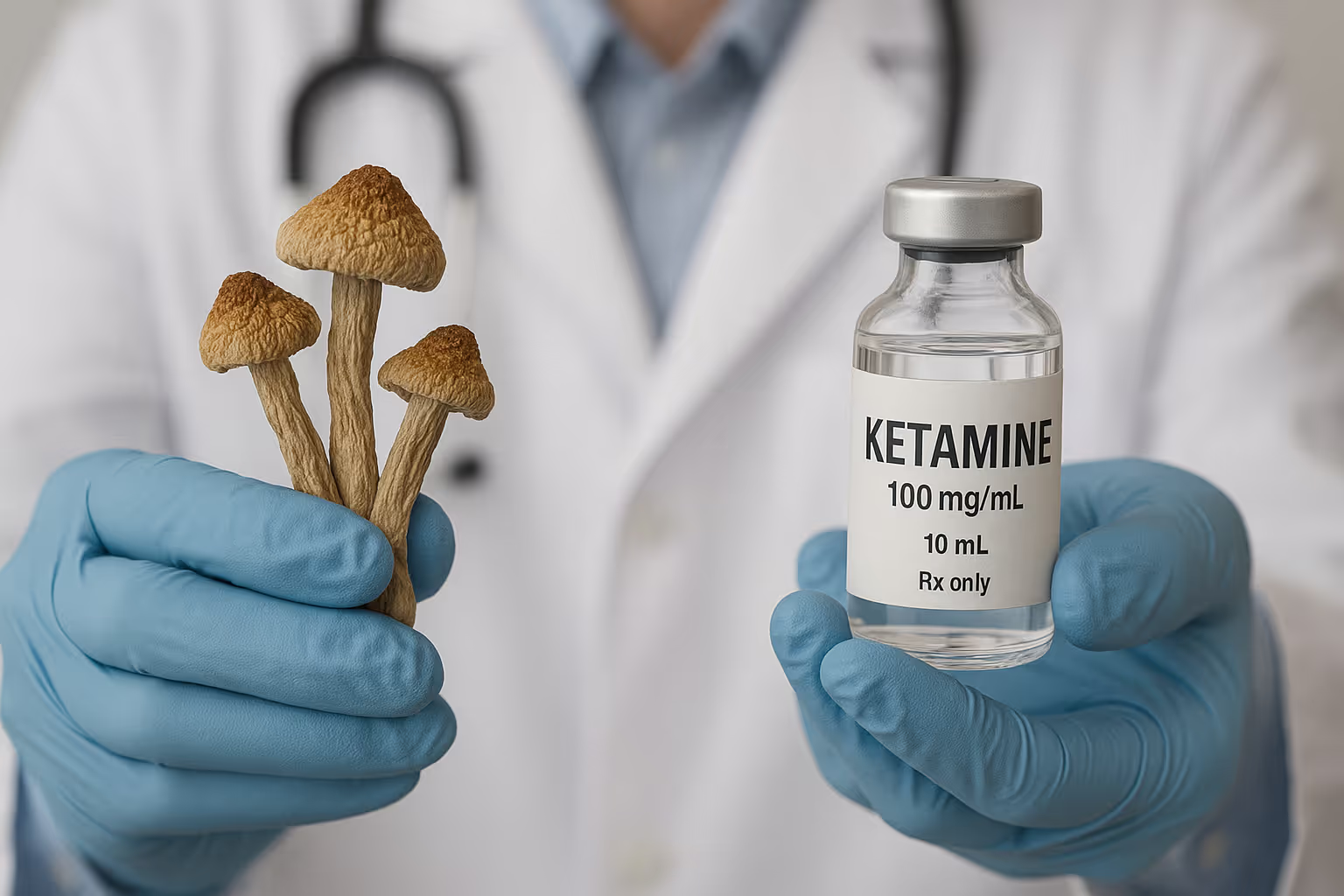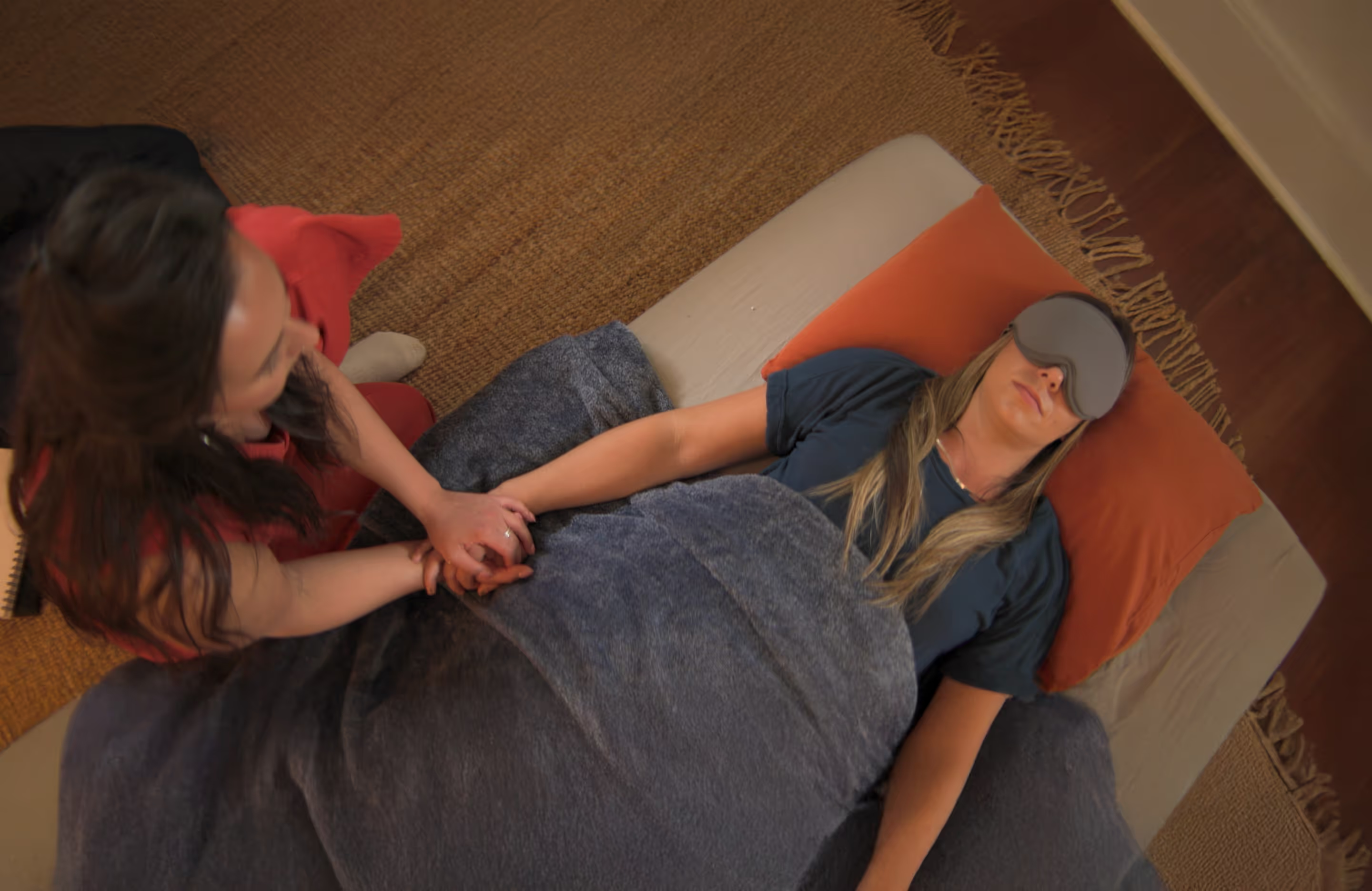Psilocybin vs. Ketamine: A Therapeutic Comparison

Psilocybin and ketamine have garnered significant attention for their potential to treat mental health conditions, especially those resistant to traditional therapies. As research progresses, understanding the nuances between the two becomes increasingly important. This comprehensive comparison delves beyond surface-level details to offer a deeper look into both substances, helping readers make informed decisions about their therapeutic possibilities.
Historical Context: The Evolution of Psychedelic Medicine
Occurring naturally in fungi, psilocybin dates back thousands of years to indigenous Mesoamerican cultures, where it played a role in spiritual and healing rituals. Ketamine, an artificially synthesized anesthetic, emerged far later in the 1960s, but found its medical footing much faster.
Psilocybin’s Slow Start Belies Promising Results
In the late 1950s, Swiss chemist Albert Hofmann, working for Sandoz Pharmaceuticals, isolated psilocybin from Psilocybe mexicana mushrooms, leading to its brief medical exploration under the brand name Indocybin. However, the counterculture movement of the 1960s sparked political backlash, culminating in the 1970 Controlled Substances Act, which classified psilocybin as a Schedule I drug—halting research for nearly half a century.
The tide shifted in 2018 when the FDA granted breakthrough therapy designation to psilocybin-assisted treatment for depression, driven by compelling studies from institutions like Johns Hopkins and Imperial College London. Today, clinical trials continue to push psilocybin toward mainstream acceptance, fueling decriminalization efforts and expanding its use in guided retreats and therapeutic settings.
Ketamine’s Shift From Physical to Mental Relief
Unlike psilocybin, fast-acting ketamine quickly gained FDA approval in 1970 for use in surgery and battlefield medicine due to its dissociative properties and safety profile. However, its antidepressant potential remained overlooked until the late 1990s, when researchers observed that patients receiving ketamine for anesthesia experienced rapid and profound mood improvements.
This discovery propelled a surge of studies, ultimately resulting in the FDA's 2019 approval of esketamine, a ketamine-derived nasal spray for treatment-resistant depression. Today, ketamine-assisted therapy is widely available through specialized clinics, offering a fast-acting alternative for patients who have not responded to conventional antidepressants. Ongoing research continues to refine its therapeutic applications, further solidifying ketamine’s role in the evolving landscape of psychedelic medicine.
Read more: Esketamine for Depression: What does the latest meta-analysis tell us?
Chemical Composition and Mechanisms: How Do They Work?
Psilocybin’s Action on the Brain
Psilocybin is a serotonergic psychedelic, meaning it primarily affects the brain's serotonin system. Structurally, it is a tryptamine, closely resembling serotonin, a neurotransmitter that regulates mood, cognition, and perception.
Once ingested, psilocybin is converted into psilocin, the active compound that binds strongly to 5-HT2A receptors. This interaction disrupts normal sensory and emotional processing, often inducing altered states of consciousness, heightened perceptual awareness, and introspective or mystical experiences.
Perhaps the most promising therapeutic mechanism involved is psilocybin’s ability to enhance neuroplasticity—the brain’s capacity to form and reorganize neural connections. By increasing neural flexibility, psilocybin may help patients break rigid thought patterns associated with treatment-resistant conditions like depression, anxiety, and PTSD. Unlike traditional antidepressants, which require daily use, a single psilocybin session has been shown to produce long-lasting positive effects on mood and cognition, likely due to its role in "resetting" neural networks.
Ketamine’s Action on the Brain
Unlike psilocybin, which modulates serotonin, ketamine primarily influences the glutamate system, which is responsible for synaptic communication and neuroplasticity. Ketamine functions as an NMDA receptor antagonist, meaning it temporarily blocks NMDA receptors to curb excessive glutamate activity. This inhibition allows a surge in brain-derived neurotrophic factor (BDNF), which is crucial for neuron survival and growth. Ketamine also enables the rapid formation of new synaptic connections, promoting neural repair and resilience.
The most prominent advantage ketamine holds over traditional antidepressants—and even psilocybin—is its speed. While conventional selective serotonin reuptake inhibitors (SSRIs) take weeks to assuage depression, ketamine can produce significant mood improvements within hours. This rapid effect is especially beneficial for individuals with treatment-resistant depression or those experiencing acute suicidal ideation.
Additionally, ketamine’s dissociative properties can create a temporary state of detachment from distressing emotions, providing immediate psychological relief in ways that psilocybin’s introspective experiences do not.
Key Differences in Mechanism and Effect
While both psilocybin and ketamine promote neuroplasticity, they do so through different pathways—psilocybin by enhancing serotonin-driven brain flexibility over time, and ketamine by triggering immediate glutamate-driven synaptic growth. Psilocybin’s effects tend to be more introspective and can lead to transformative emotional breakthroughs, whereas ketamine provides a fast-acting, temporary dissociation from distress before initiating longer-term neural repair. This makes psilocybin better suited for deep psychological processing in structured therapeutic settings, while ketamine is often used in clinical environments to rapidly stabilize severe depressive states.
Both compounds expand on traditional psychiatric models, offering alternative treatments for depression, PTSD, and other mental health disorders. While not entirely distinct, their differing mechanisms highlight why they are used in distinct contexts: ketamine for immediate relief in crisis situations, and psilocybin in guided psychedelic therapy for long-term transformation.
Read more: Psilocybin and Neuroplasticity: Research & Benefits
Therapeutic Applications: Broad Uses in Mental Health Treatment
Psilocybin: Beyond Depression and Anxiety
While psilocybin has shown promise in treating major depressive disorder (MDD) and anxiety, its therapeutic potential extends beyond these conditions. Clinical trials have found psilocybin effective for individuals suffering from post-traumatic stress disorder (PTSD), obsessive-compulsive disorder (OCD), and even addiction.
In the modern day, one compelling application of psilocybin is in helping individuals manage end-of-life anxiety, particularly among terminal cancer patients. Research suggests that psilocybin may provide relief from existential distress, offering patients a renewed sense of peace and acceptance in the face of death.
Ketamine: Soothing Severe Conditions
Ketamine’s versatility as a treatment extends beyond depression and anxiety. As an FDA-approved treatment for treatment-resistant depression (TRD), ketamine has proven to be an effective option for patients who have not responded to traditional antidepressants. It has also shown promise in treating PTSD, chronic pain, and even bipolar disorder.
Recent studies have indicated that ketamine's unique action on the brain may prevent relapse, offering hope for individuals struggling with recurrent depressive episodes. This premise stems from ketamine’s ability to treat the depressive symptoms that frequently emerge in the high-risk relapse period weeks after detoxification.
A Combined Approach?
Though research is limited, some experts speculate that psilocybin and ketamine could complement each other in treatment. Ketamine’s rapid antidepressant effects might provide immediate relief, stabilizing patients before psilocybin therapy fosters deeper, long-term cognitive shifts. Psilocybin’s ability to promote neuroplasticity could also help sustain ketamine’s benefits, potentially reducing the need for frequent infusions.
While clinical trials have yet to explore this combination in depth, future research may reveal whether these substances, used together, offer a more effective approach to mental health treatment.
Methods of Delivery: Administration in Therapeutic Settings
Psilocybin Delivery: Clinical Trials and Psychedelic-Assisted Therapy
Psilocybin’s method of administration primarily occurs in controlled, clinical settings, often as part of research trials or licensed psychedelic-assisted therapy. Unlike ketamine, which can be administered more broadly, psilocybin typically requires a licensed facilitator due to its potent effects and the need for therapeutic guidance. Psilocybin may be ingested in various forms, including:
- Dried mushrooms, often directly consumed whole
- Psilocybin capsules for precise dosing, typically used in clinical studies
- Psilocybin extracts and teas, formulated to reduce nausea during consumption
Given the illegality of psilocybin in most regions, its use is often restricted to clinical trials or in areas where decriminalization movements have gained ground. As of 2025, Oregon and Colorado are the only states that have legalized psilocybin in America; however, others may soon follow.
In the aforementioned areas, state-regulated psilocybin programs have been established to oversee legal, therapeutic use outside of clinical trials. These programs provide structured environments where licensed facilitators guide individuals through psilocybin sessions, typically within designated service centers. Organizations like Odyssey operate within these legal frameworks, offering guided retreats and therapeutic experiences in accordance with state health authority regulations.
Ketamine Delivery: Varied Routes for Targeted Relief
Ketamine is legally available in several medical settings, and its administration is more flexible than psilocybin. Ketamine therapy can be delivered through various methods, depending on the specific treatment protocol:
- Intravenous (IV) infusions, the most common delivery method for depression, typically administered in a clinical setting under professional supervision.
- Esketamine nasal spray, FDA-approved for treatment-resistant depression, administered in licensed healthcare facilities.
- Oral or sublingual lozenges, typically used off-label for at-home treatments under doctor supervision, offering a less invasive but slower-acting alternative.
Ketamine’s broad availability in treatment-resistant cases makes it an accessible option for patients, especially given its established medical legitimacy as an anesthetic and its growing status as an antidepressant. One of its most effective couplings is ketamine-assisted psychotherapy (KAP), where sessions include preparation, dosing, and integration to support long-term healing.
Side Effects and Safety Data: Evaluating the Risks
Psilocybin: A Low Risk with Rare Complications
Generally, psilocybin is well-tolerated, with most adverse effects being temporary and related to its hallucinogenic properties. These can include:
- Nausea and vomiting, particularly when consumed in large quantities or when the mushroom is not prepared properly
- Increased blood pressure during intense psychedelic experiences
- Psychological risks, including “bad trips” that can result in panic, confusion, or heightened anxiety
Although rare, some individuals may experience Hallucinogen Persisting Perception Disorder (HPPD), a condition where visual disturbances from the drug can persist long after its effects have worn off. For most, however, these experiences are short-lived and fade without medical intervention.
Read more: The Safety of Psilocybin Therapy
Ketamine: Potential for Dependence and Long-Term Effects
While ketamine has been shown to be an effective and rapid treatment for depression, it is not without its risks. Some individuals may experience:
- Dizziness, nausea, and confusion during or after administration
- Bladder toxicity, particularly with prolonged or frequent use
- Cognitive impairments, including memory problems, particularly with long-term abuse
Ketamine’s potential for psychological dependence is also a concern, as its dissociative effects can become addictive for some users. Regular monitoring by healthcare providers is crucial to mitigate these risks, especially in long-term treatment.
Conclusion: Distinct Therapeutic Paths
Psilocybin and ketamine each offer distinct advantages for those struggling with mental health conditions, though they operate through different mechanisms. Psilocybin’s focus on serotonin receptors and its ability to promote lasting changes in neural circuitry make it a promising tool for long-term mental health recovery. Ketamine, with its rapid onset and action on glutamate, provides immediate relief for individuals facing severe, treatment-resistant depression or suicidal ideation. As research continues to unfold, these substances may complement traditional therapies, providing new hope to those seeking alternative treatments.
Frequently Asked Questions (FAQs)
How does psilocybin work in the brain? Psilocybin is converted into psilocin, which binds to serotonin receptors, altering perception and emotional processing. It promotes neuroplasticity, potentially aiding long-term mental health recovery.
What is the difference between psilocybin and ketamine? Psilocybin affects serotonin receptors, while ketamine targets glutamate receptors. Ketamine offers rapid antidepressant effects, while psilocybin promotes lasting neural changes.
What are the benefits of psilocybin for mental health? Psilocybin helps with depression, anxiety, PTSD, OCD, addiction, and end-of-life anxiety.
Can ketamine treat conditions other than depression? Yes, ketamine is also effective for PTSD, chronic pain, and bipolar disorder.
What are the side effects of psilocybin? Psilocybin can cause nausea, anxiety, and "bad trips." Rarely, it may lead to persistent visual disturbances (HPPD).
What are the risks of ketamine? Ketamine may cause dizziness, bladder toxicity, cognitive issues, and psychological dependence.
How are psilocybin and ketamine administered? Psilocybin is consumed in clinical settings as mushrooms, capsules, or extracts. Ketamine is administered via IV, nasal spray, or oral lozenges.
Which provides faster symptom relief: psilocybin or ketamine? Ketamine offers quicker relief, often within hours, while psilocybin may take longer but provides lasting benefits.
Which is more widely available for treatment? Ketamine is more widely available, while psilocybin is mostly limited to clinical trials or decriminalized areas.
Are psilocybin and ketamine legal for therapeutic use? Ketamine is FDA-approved, while psilocybin's legal status depends on local regulations or clinical trial approval.

.svg)









.svg)